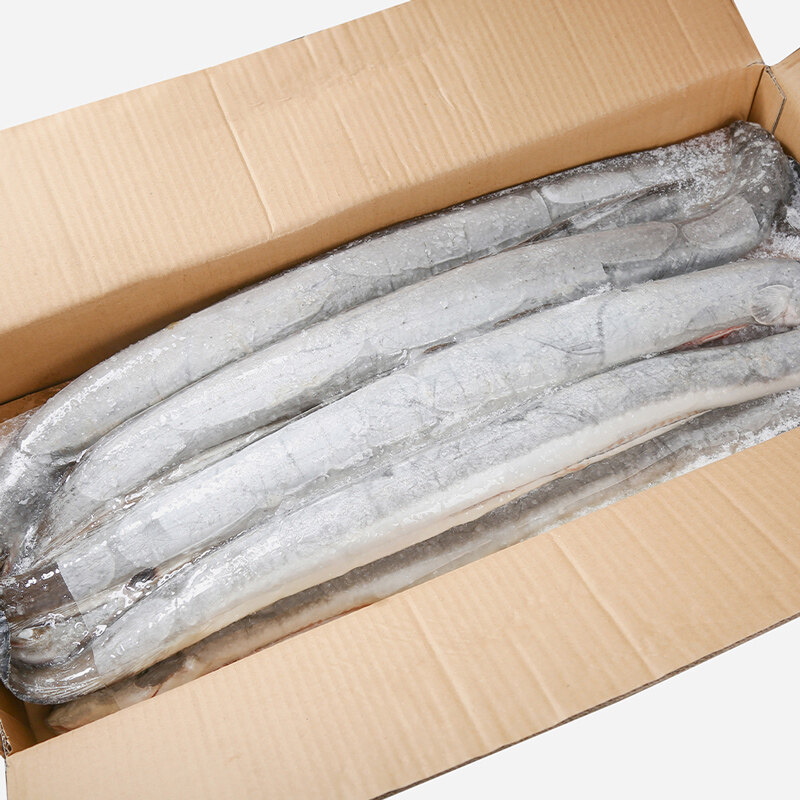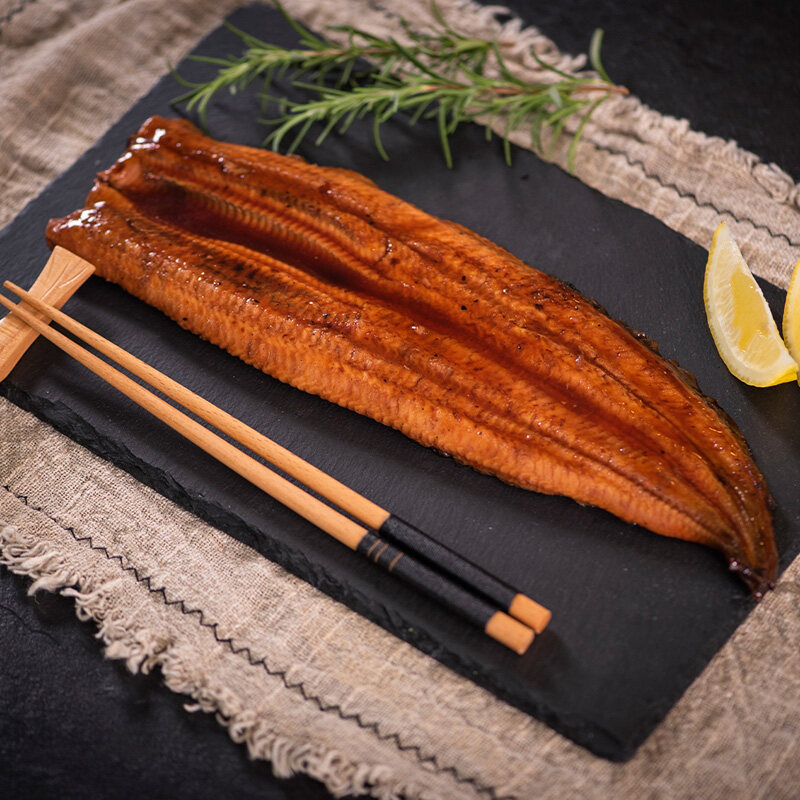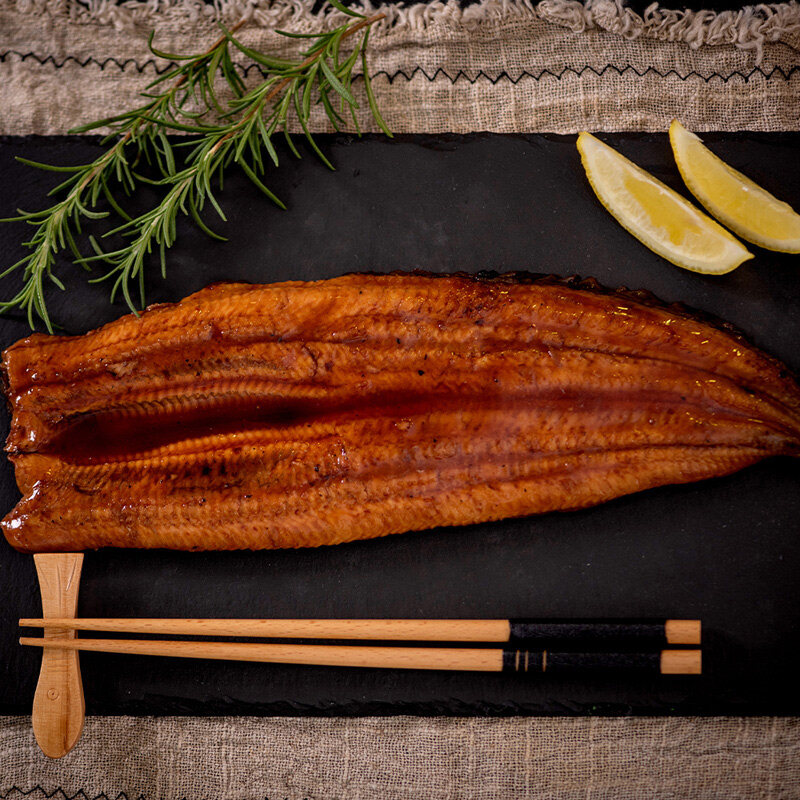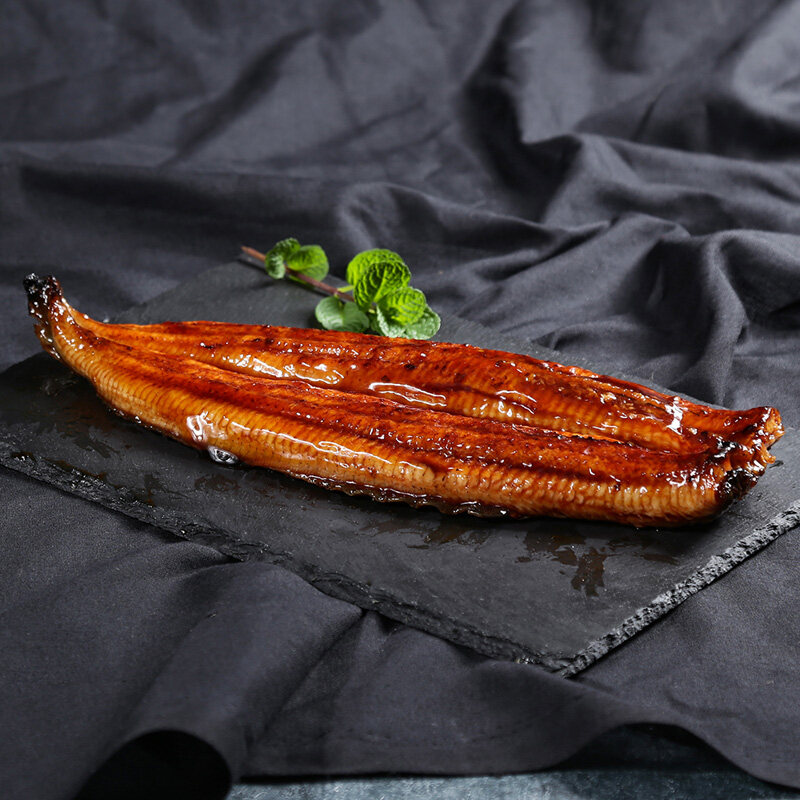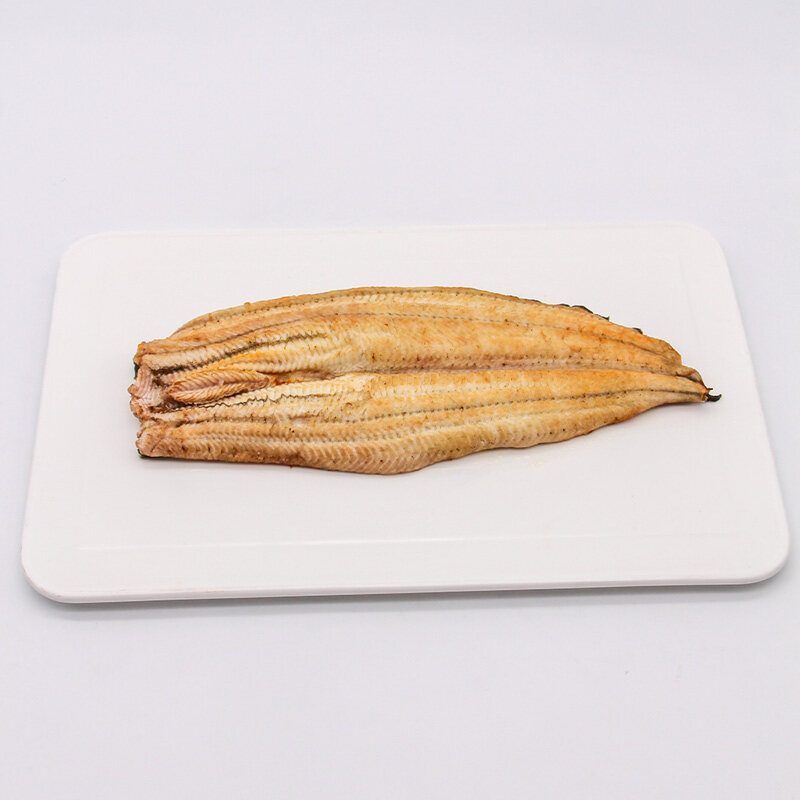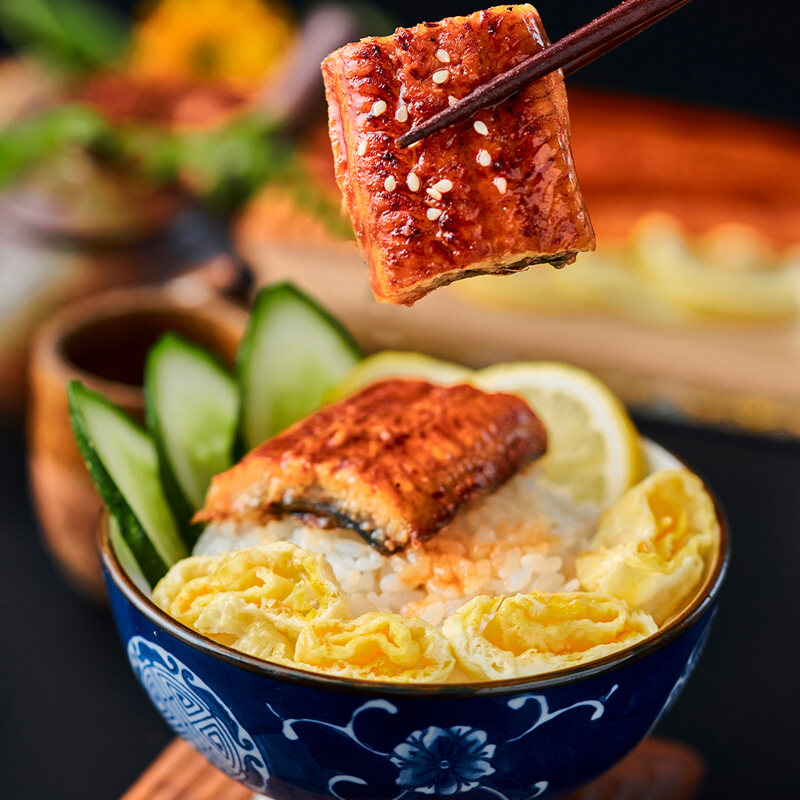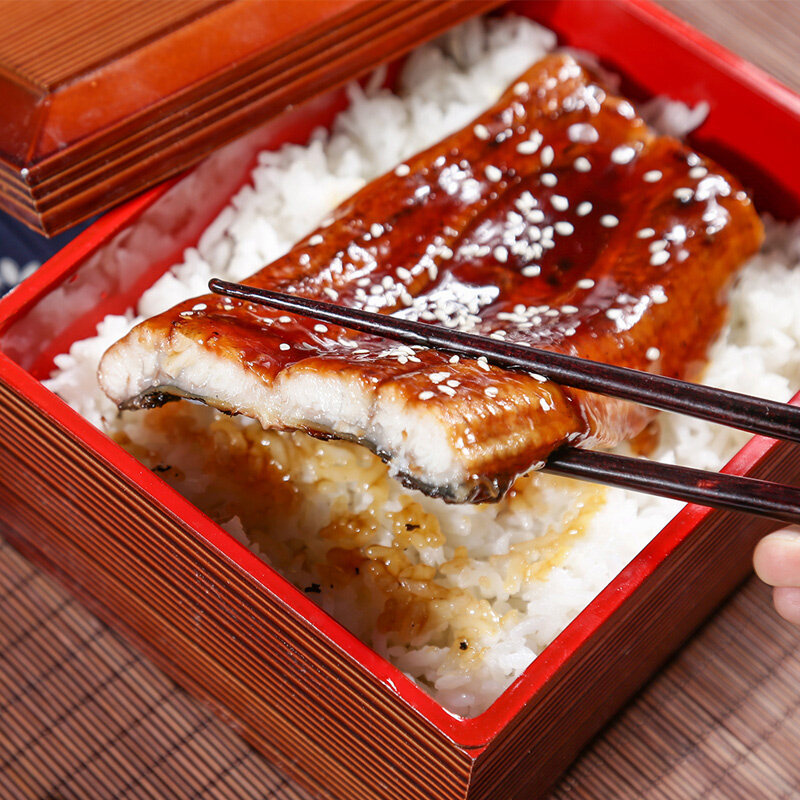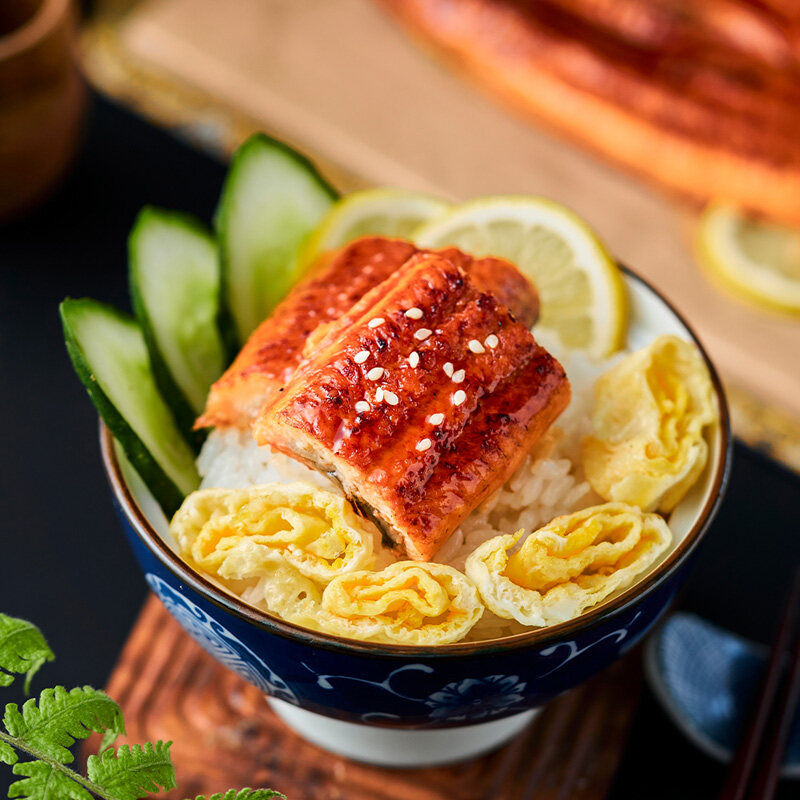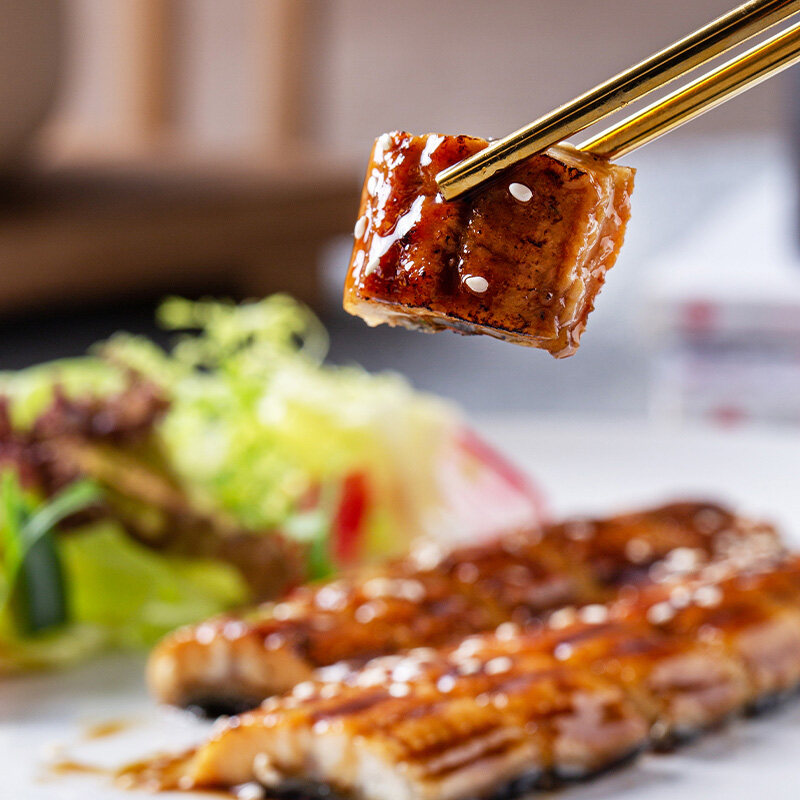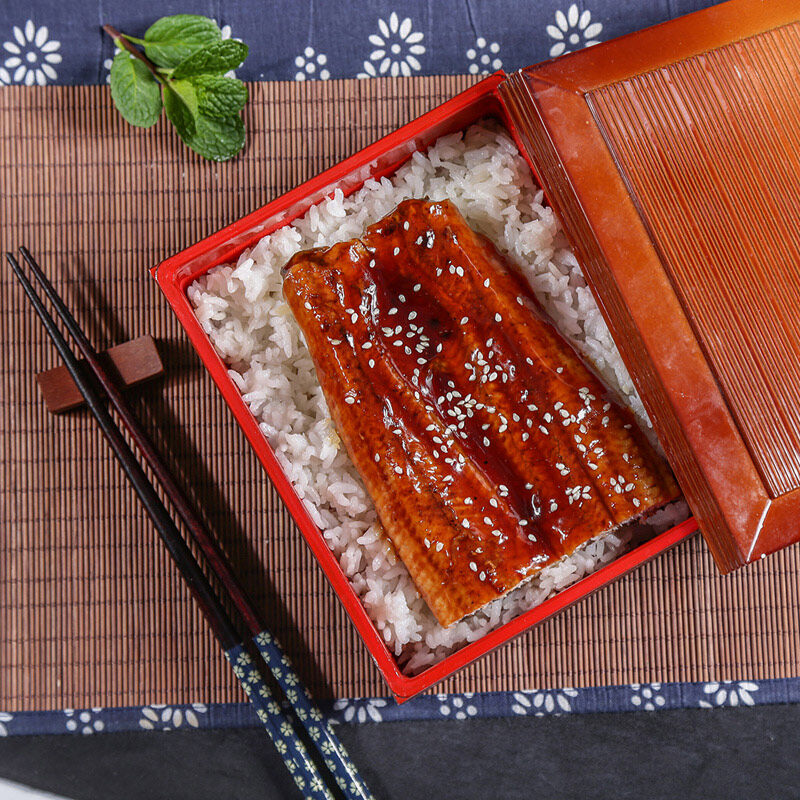Email cannot be empty
Password cannot be empty
Email format error
Email cannot be empty
Email already exists
6-20 characters(letters plus numbers only)
The password is inconsistent
Email format error
Email cannot be empty
Email does not exist
6-20 characters(letters plus numbers only)
The password is inconsistent

Eel
Eel
(25)OEM Customize Wholesale High Quality Nutritious Healthy Frozen Anguilla
We are a trusted source of sushi-grade frozen roasted eel slices. Our products enjoy a very good reputation among our respectful clients from a variety of nations since they are made from carefully chosen fresh and safe raw materials, processed in our dependable factories, and overseen by our QC group.
Gold Supplier Specification Customization Frozen Seafood Japanese Food Seasoned Sumibi Kabayaki
Simply remove the vacuum package from this product and thaw it under refrigerated right before use for a very convenient cooking method. Fresh eel is the primary component of roasted eel, so its nutritional value is relatively high. Vitamins A and E are both abundant in eels, with vitamin A being 100 times more abundant than beef and 300 times more abundant than pork. The liver is well-protected, energy is recovered, and vision loss is prevented by vitamins A and E.
Factory Wholesale Tender and Juicy Seafood Japanese Cuisine Ingredients Frozen Broiled Eel
Simply remove the vacuum package from this product and thaw it under refrigerated right before use for a very convenient cooking method. Fresh eel is the primary component of roasted eel, so its nutritional value is relatively high. Vitamins A and E are both abundant in eels, with vitamin A being 100 times more abundant than beef and 300 times more abundant than pork. The liver is well-protected, energy is recovered, and vision loss is prevented by vitamins A and E.
Frozen Roasted Eel
Simply remove the vacuum package from this product and thaw it under refrigerated right before use for a very convenient cooking method. Fresh eel is the primary component of roasted eel, so its nutritional value is relatively high. Vitamins A and E are both abundant in eels, with vitamin A being 100 times more abundant than beef and 300 times more abundant than pork. The liver is well-protected, energy is recovered, and vision loss is prevented by vitamins A and E.
Frozen Shirayaki eel
"How should frozen unagi koganeyaki be prepared? using microwaves Heat the Unagi Koganeyaki for 1-2 minutes, then transfer it to a platter and cover it with plastic wrap. (500W) using a water boiler For three to five minutes, heat the bag in boiling water. due to direct heat Lay a piece of aluminum foil on the mesh and cook the skin side for one minute and the meat side for two to three minutes using a toaster oven or gas stove griller. (On the surface, there will be little bubbles.)"
Frozen Unagi Koganeyaki
Unagi Shirayaki involves roasting the eel fillet without any additional ingredients or soy sauce, and Unagi Kabayaki involves roasting the eel fillet with an unique sweet unagi sauce. It is clear that Unagi Shirayaki emphasizes on the eel's natural flavor, although unagi can be prepared in a variety of ways with different types of soy sauce. Unagi Shirayaki is becoming more and more well-known worldwide.
Factory Price Sale Nutritious Healthy Japanese BBQ Frozen Prepared Eel Unadon Cuts
Seafood is frequently cooked using the grilling technique known as "kabayaki." Initially gutted, boned, and butterflied, the item is then marinated in a mixture of soy sauce, sake, sugar, and other seasonings before being grilled for kabayaki. Grilled eels have been a favorite food in Japan since the Edo era (1603 – 1868). They were a typical supper because they were usually inexpensive. Due to declining eel numbers, they are increasingly expensive and typically consumed as a luxury meal today.
Hot Selling Delicious Seafood Frozen Sumibi Kabayaki Cuts In Sushi Restaurant
Seafood is frequently cooked using the grilling technique known as "kabayaki." Initially gutted, boned, and butterflied, the item is then marinated in a mixture of soy sauce, sake, sugar, and other seasonings before being grilled for kabayaki. Grilled eels have been a favorite food in Japan since the Edo era (1603 – 1868). They were a typical supper because they were usually inexpensive. Due to declining eel numbers, they are increasingly expensive and typically consumed as a luxury meal today.
OEM Customize Wholesale Instant Rice Sushi Japanese Food Frozen Baked unagi Cuts
Seafood is frequently cooked using the grilling technique known as "kabayaki." Initially gutted, boned, and butterflied, the item is then marinated in a mixture of soy sauce, sake, sugar, and other seasonings before being grilled for kabayaki. Grilled eels have been a favorite food in Japan since the Edo era (1603 – 1868). They were a typical supper because they were usually inexpensive. Due to declining eel numbers, they are increasingly expensive and typically consumed as a luxury meal today.
Factory Price Wholesale Vacuum Packaged Frozen Grilled Eel Unadon Cuts
Seafood is frequently cooked using the grilling technique known as "kabayaki." Initially gutted, boned, and butterflied, the item is then marinated in a mixture of soy sauce, sake, sugar, and other seasonings before being grilled for kabayaki. Grilled eels have been a favorite food in Japan since the Edo era (1603 – 1868). They were a typical supper because they were usually inexpensive. Due to declining eel numbers, they are increasingly expensive and typically consumed as a luxury meal today.
Factory Direct Selling Tender And Juicy Nutritious Healthy Frozen Roasted Eel Cuts
Seafood is frequently cooked using the grilling technique known as "kabayaki." Initially gutted, boned, and butterflied, the item is then marinated in a mixture of soy sauce, sake, sugar, and other seasonings before being grilled for kabayaki. Grilled eels have been a favorite food in Japan since the Edo era (1603 – 1868). They were a typical supper because they were usually inexpensive. Due to declining eel numbers, they are increasingly expensive and typically consumed as a luxury meal today.
Frozen Kabayaki Eel Cut
Seafood is frequently cooked using the grilling technique known as "kabayaki." Initially gutted, boned, and butterflied, the item is then marinated in a mixture of soy sauce, sake, sugar, and other seasonings before being grilled for kabayaki. Grilled eels have been a favorite food in Japan since the Edo era (1603 – 1868). They were a typical supper because they were usually inexpensive. Due to declining eel numbers, they are increasingly expensive and typically consumed as a luxury meal today.


